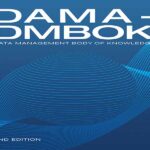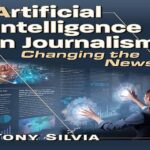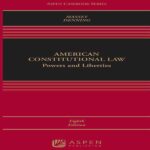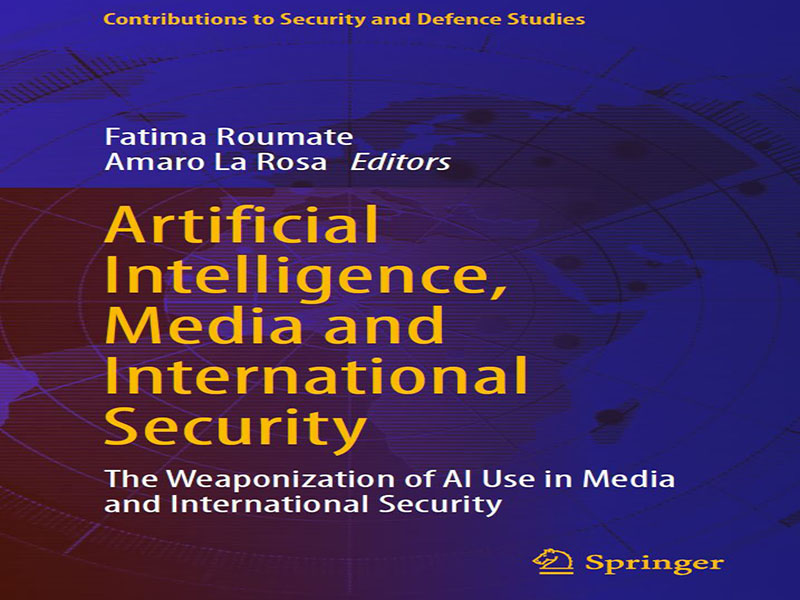- عنوان کتاب: Artificial Intelligence, Media and International Security
- نویسنده: Fatima Roumate
- حوزه: کاربرد هوش مصنوعی
- سال انتشار: 2025
- تعداد صفحه: 158
- زبان اصلی: انگلیسی
- نوع فایل: pdf
- حجم فایل: 2.12 مگابایت
هوش مصنوعی (AI) تحول عمیقی در دنیای رسانه ایجاد کرده است که به نوبه خود، امنیت بینالمللی را نیز متحول میکند. با این حال، تعاملات بین این سه عنصر، چالشهای پیش روی جامعه بینالمللی را افزایش میدهد. روندهای مربوط به هوش مصنوعی و استفاده از چنین فناوریهای پیشرفتهای در رسانهها از نظر روابط بینالملل در مرکز بحث جهانی قرار دارد. هوش مصنوعی در حال متحول کردن رسانهها است؛ علاوه بر این، با توجه به نقش مهم رسانهها در قدرت نرم و هوشمند، این انقلاب به حوزه امنیت بینالملل و روابط بینالملل نیز گسترش یافته است. همزمان با تغییر از جهان تک قطبی به چند قطبی، یکی از ویژگیهای پیچیده و بحثبرانگیز نظم نوین جهانی از نقش فزاینده رسانهها در عصر هوش مصنوعی ناشی میشود. درک تأثیرات ملموس و ناملموس هوش مصنوعی بر رسانهها – و از طریق رسانهها از نظر امنیت بینالمللی – چالشی مهم برای محققان و سیاستگذاران است. بنابراین، این کتاب با عنوان «هوش مصنوعی، رسانه و امنیت بینالملل» قصد دارد سهم علمی خود را در بحث جهانی در مورد تعاملات بین سه عنصر هوش مصنوعی، رسانه و امنیت بینالملل ارائه دهد. در این کتاب، ویراستاران به بررسی راههایی میپردازند که رسانهها، که توسط هوش مصنوعی توانمند و متحول شدهاند، امنیت بینالمللی را در بستر گذار از تکقطبی به چندقطبی متحول میکنند. مفاهیم اساسی مانند اینها در این جلد از دریچه چندین نظریه، از روابط بینالملل گرفته تا علوم سیاسی و اجتماعی، مورد بحث قرار خواهند گرفت. هدف اول این جلد، ارائه ابزارهای نظری لازم و منابع روششناختی برای مطالعه هوش مصنوعی در رسانهها و همچنین تأثیرات ملموس و ناملموس آن بر امنیت بینالمللی است. هدف دوم، تجزیه و تحلیل نقش فعلی هوش مصنوعی و رسانهها در تحول امنیت بینالمللی است. سوم، این کتاب با هدف توضیح چالشهای معاصر ذاتی در کاربرد هوش مصنوعی در حوزه رسانه و تهدید امنیت بینالمللی ناشی از استفاده مخرب از آن است. هدف چهارم، تدوین معیارهای عملی برای تجزیه و تحلیل آیندهنگر کاربردهای هوش مصنوعی در نظم نوین جهانی و توازن جدید قدرت از طریق رسانهها، با توجه به اهمیت دیپلماسی رسانهای در عصر هوش مصنوعی است. در جامعه معاصر، کاربرد هوش مصنوعی در مجموعهای از فعالیتها و زمینهها، از جمله ارتباطات، رسانه و امنیت بینالمللی، به طور فزایندهای اهمیت دارد. نگاه چند رشتهای بسیار مهم است و بنابراین این کتاب تلاش میکند تا درک جامعی از هوش مصنوعی چندبعدی ارائه دهد. بنابراین، برای تحلیل و توضیح تعاملات بین هوش مصنوعی، رسانهها و امنیت بینالمللی به چندین رویکرد نیاز است. اول، رویکرد سیاسی برای سنجش تأثیر رسانههای توانمند شده با هوش مصنوعی بر روابط بینالملل ضروری است. در مرحله بعد، یک رویکرد اعتقادی برای بررسی قوانین، مقررات و ادبیات علمی موجود در حوزه هوش مصنوعی و همچنین چالشهای مربوط به حقوق بینالملل اتخاذ خواهد شد. سوم، از رویکرد آیندهنگر برای تحلیل چالشهای مربوط به روندهای هوش مصنوعی استفاده خواهد شد. برای بررسی تعامل بین هوش مصنوعی و روابط بینالملل، رویکرد چهارم، رویکرد فناوری خواهد بود. علاوه بر این، یک مطالعه موردی به ارزیابی روشهایی که استفاده از هوش مصنوعی بر مباحثات در یک سازمان بینالمللی تأثیر میگذارد، میپردازد. هدف، نشان دادن روندها و چالشهای رویکردهای معاصر هوش مصنوعی مرتبط با رسانه (ارتباطات و روزنامهنگاری) و پیامدهای آن برای امنیت بینالمللی از دیدگاهها و پارادایمهای نظری مختلف است. نویسندگان از رشتههای علمی مختلف، از روابط بینالملل و حقوق بینالملل گرفته تا جامعهشناسی، روزنامهنگاری و ارتباطات، در این موضوع مشارکت داشتهاند. این جلد، متخصصان شناختهشده جهانی و محققان جوان را با هم ترکیب میکند و دیدگاههای مختلف دانشگاهیان و متخصصان را در خود جای میدهد. فصل 1 به هوش مصنوعی، جنگ و رسانه اختصاص دارد. نویسنده این فصل، شانون ای. بوئن، بحث خود را بر «سیستم نظامی مدرن» متمرکز میکند که از «ارتباطات استراتژیک، جنگ اطلاعاتی، اطلاعات نادرست، اطلاعات نادرست، روابط رسانهای و برنامهریزی استراتژیک شهروندان و کمپینهای ارتباطی ضدهدف برای تغییر چشمانداز جنگ» استفاده میکند (فصل 1). علاوه بر این، او تعاملات بین هوش مصنوعی، جنگ و رسانه را از طریق بحث در مورد ابزارهای مورد استفاده توسط آنچه او سیستم نظامی مدرن مینامد، توضیح میدهد. هوش مصنوعی عنصر مهمی در درک گذار از سیستمهای نظامی قدیمی به مدرن و از استراتژیهای نظامی کلاسیک به انواع جدید جنگ است. به گفته نویسنده فصل 2، هوش مصنوعی در حال متحول کردن رسانهها است و این تفاوتهای مهم بین جنگ در واقعیت و جنگ در فضای مجازی را توضیح میدهد. به عبارت دیگر، رسانههای توانمند شده توسط هوش مصنوعی دو پیروز جنگ را به ما نشان میدهند؛ یکی ممکن است…
Artificial intelligence (AI) has created a deep transformation in the world of media which, in turn, is transforming international security. Interactions between these three elements, however, are enhancing the challenges faced by international society. Trends related to AI and the use of such advanced technologies in the media in terms of international relations are at the center of the global debate. AI is revolutionizing media; furthermore, in view of the significant role of the media in soft and smart power, this revolution has extended to the realm of international security and international relations. Coinciding with a shift from a unipolar to multipolar world, a complex and controversial characteristic of the new world order is derived from the augmented role of media in the era of AI. Understanding the tangible and intangible impacts of AI on media—and through media in terms of international security—represents a significant challenge for researchers and policymakers. Therefore, this book titled “AI, media, and international security” aims to provide a scientific contribution to the global debate on the interactions between the three elements of AI, media, and international security. In it, the editors examine the ways in which the media, empowered and revolutionized by AI, are transforming international security in the context of the transition from unipolarity to multipolarity. Fundamental concepts such as these will be discussed in this volume through the lens of several theories, ranging from international relations to political and social sciences. The first objective of this volume is to provide the necessary theoretical tools and methodological resources for the study of AI in the media as well as the tangible and intangible impacts on international security. The second objective is to analyze the current role of AI and the media in the transformation of international security. Thirdly, the book aims to explain the contemporary challenges inherent in the application of AI in the media field and the threat to international security caused by malicious use. The fourth goal is to formulate practical criteria for the prospective analysis of AI applications in the new world order and the new balance of power through the media, in light of the importance of media diplomacy in the age of AI. In contemporary society, the application of AI to a series of activities and fields, including communication, media, and international security, is increasingly important. A multidisciplinary view is crucial and therefore this volume attempts to present a holistic understanding of multidimensional AI. Thus, several approaches are needed to analyze and explain the interactions between AI, the media, and international security. First, the political approach is necessary to measure the impact of AI-empowered media on international relations. Next, a doctrinal approach will be adopted to provide a review of the existing laws, regulations, and scholarly literature in the field of AI as well as the challenges related to international law. Thirdly, the prospective approach will be used to analyze the challenges related to the trends in artificial intelligence. In order to consider the interaction between AI and international relations, the fourth approach will be technological. Additionally, a case study serves to evaluate the ways in which the use of artificial intelligence influences debates in an international organization. The aim is to show the trends and challenges of contemporary AI approaches linked to media (Communication and Journalism) and its implications for international security from various theoretical perspectives and paradigms. Authors have contributed to this topic from different scientific disciplines, ranging from international relations and international law to sociology, journalism, and communication. This volume combines both globally recognized experts and young researchers, integrating various points of view from both academics and practitioners. Chapter 1 is dedicated to artificial intelligence, warfare, and media. The author of this chapter, Shannon A. Bowen, focuses her discussion on the “modern military system,” which uses the “strategic communication, information warfare, misinformation, disinformation, media relations, and strategic planning of citizen and counter-targeted communication campaigns to alter the warfare landscape” (Chap. 1). Furthermore, she explains the interactions between AI, warfare, and the media through a discussion of the tools used by what she calls the modern military system. AI is an important element in understanding the transitions from old to modern military systems and from classic military strategies to new types of warfare. AI is revolutionizing the media, and this explains the significant differences between war in reality and that in virtual space, according to the author of Chap. 2. In other words, AI-empowered media show us two victors of war; one may win on the battlefield while another may triumph in the media and virtual space. Marta N. Lukacovic and Deborah D. Sellnow-Richmond explain the tangible impact of the malicious use of AI on global security, considering the communication dimension (Chap. 3). Authors described MUAS as “a component of a broader mega-crisis.” Mitigating MUAS necessitates a multidisciplinary approach and a communication dimension, including fields such as communication, media, and journalism. The authors of this chapter highlight the importance of securitization theory in addressing the malicious use of AI (MUAS) and its implications for international security. Mitigating MUAS requires a multidisciplinary approach, with a “communication dimension” that includes fields such as communication, media, and journalism. The authors of Chap. 4, Carlos Enrique Fernández García, Samantha Gómez Gamboa, and Piero García Castillo, talk about how a multidisciplinary approach and communication dimension are very important for reducing MUAS and predicting and solving global crises in the new world order, which is marked by the rise of new ideas like “media imperialism.” They used this concept to describe interactions between countries from the Global North and the Global South, highlighting how AI and media are employed by major powers as tools of a new form of colonialism. The authors argue that algorithms (including neurosymbolic ones) affect information flows in the new world order, characterized by the global race for neurosymbolic artificial intelligence. This race reshapes the balance of power and creates profound changes in the geopolitical landscape. This leads us to explore the influence of artificial intelligence on established media diplomacy, addressing the question of international security as the authors of Chap. 5 discuss the implications of AI for the media before exploring the consequent challenges to international peace and security. The authors of this chapter raise the question of the increased complexity of the security landscape as a result of the use of artificial intelligence in media diplomacy and its implications on conflict resolutions and negotiations. According to Hajji Said (Chap. 6), the challenges and risks related to AI and media diplomacy necessitate a rethinking of the ultimate goal of diplomacy, considering the impacts of AI and data fragmentation. This topic is further discussed by Hafidi Ahmed in Chap. 7, titled “AI and Transnational Data Flows: Challenges and Imperatives of Sovereignty.” The author of this chapter underlines the intersection between data fragmentation and data sovereignty conditioned by technological sovereignty. He argued that AI governance and AI regulation are both an urgent need driven by the complexities surrounding transnational data flows, the extraterritorial application of laws, and the challenges related to the territorial localization of data. As noted by Hassan Benouachane, author of Chap. 8, addressing this urgent need is crucial to harnessing the opportunities and mitigating the risks incurred by the significant impact of AI in the field of journalism. In this chapter, Benouachane explores “the substantial promise of AI in journalism” and the evolving interactions between AI and journalists. This raises the ethical concern “that journalism continues to fulfill its vital function in informing and shaping society,” a point emphasized by Benouachane. Finally, globally recognized experts on sociology in journalism have authored Chap. 9 and dedicated it to “Artificial intelligence and media communications in Russia” although great powers such as Russia, the United States of America and China are used as case studies in the previous chapters. The authors of this chapter display positive attitudes toward the prospect of using AI for journalistic practices in Russia. In conclusion, media empowered by AI is changing warfare and marking the transition from classic to new types of war and from old to modern military systems. Such a transition obliges international society to rethink international public law. The starting point is an international banned mechanism which combines the ethics of AI and the ethics of media to ensure the inclusion of media in international peace and security for the future.
این کتاب را میتوانید از لینک زیر بصورت رایگان دانلود کنید:
Download: Artificial Intelligence, Media and International Security





































نظرات کاربران